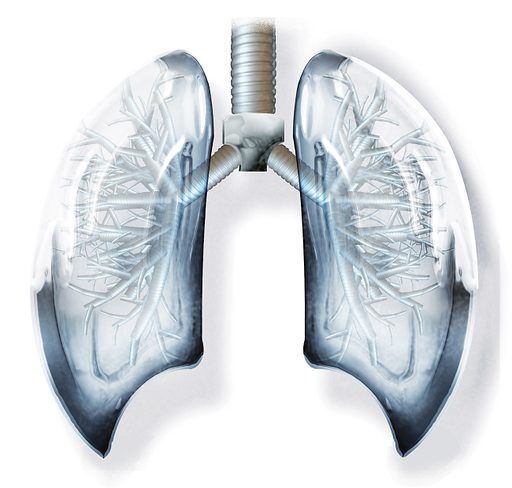AI Model May Predict Immunotherapy Responses in Advanced NSCLC
Use of Deep-IO may help refine treatment precision and identify patients with advanced NSCLC who are likely to benefit from immune checkpoint inhibitors.
"This analysis could serve as an auxiliary biomarker alongside PD-L1 immunohistochemistry for advanced NSCLC, potentially enhancing patient stratification and improving selection of tailored therapy for each patient while optimizing the benefit-cost balance in ICI treatment," according to the study authors.

A deep learning–based artificial intelligence (AI) response stratification model—Deep-IO—may predict responses to immune checkpoint inhibitors (ICIs) across different cohorts of patients with advanced non–small cell lung cancer (NSCLC), according to findings from a multicenter study published in JAMA Oncology.1
The objective response rate (ORR) to ICIs was 26% (n = 159/614) in a US-based developmental cohort and 28% (n = 96/344) in an EU-based validation cohort. Regarding ICI response predictions, Deep-IO showed an F1-score of 0.71, recall score of 0.70, and precision score of 0.73 in the development cohort; the respective values were 0.69, 0.71, and 0.69 in the validation cohort. The overall accuracy of the model was 70% in the development cohort, as Deep-IO correctly predicted nonresponder and responder status in 55% (n = 51/69) and 15% (n = 14/24), respectively. Across the validation cohort, the overall accuracy was 71%, with 63% (n = 217/248) of nonresponders and 8% (n = 28/96) of responders correctly identified.
When stratifying patients based on main histologic subtypes in the validation cohort, Deep-IO scores correlated with progression-free survival (PFS; 95% CI, 0.40-0.72; P <.001) and overall survival (OS; 95% CI, 0.38-0.69; P <.001) among patients with lung adenocarcinoma (n = 237). Investigators noted no significant correlation with PFS or OS in the lung squamous cell carcinoma subgroup (n = 77). When considering factors such as PD-L1 expression, ICI line, ECOG performance status, and histologic findings, a multivariate analysis indicated that Deep-IO independently predicted PFS (HR, 0.56; 95% CI, 0.42-0.76; P <.001) and OS (HR, 0.53; HR, 0.39-0.73; P <.001).
Among 93 patients in the developmental cohort, Deep-IO yielded the highest area under the receiver operating characteristic curve (AUC; 0.75; 95% CI, 0.62-0.85) and sensitivity (0.91; 95% CI, 0.73-0.99) as a predictive biomarker of response to ICIs, exceeding those attained with PD-L1 status, tumor-infiltrating lymphocytes (TILs), and tumor mutational burden (TMB). Within the validation cohort, the AUC was 0.66 (95% CI, 0.60-0.72) with Deep-IO vs 0.67 (95% CI, 0.60-0.74) with PD-L1, although the former demonstrated 10% higher specificity for identifying those without a response.
“This is the first proof-of-concept study to devise an [AI]-driven model for predicting ICI response in advanced and metastatic stages of NSCLC using digital hematoxylin-eosin [H&E] pathology images. Across datasets from 1 US and 3 EU-based centers and various slide scanners, Deep-IO analysis demonstrated robust performance in predicting clinical outcomes of ICI therapy for patients treated in both first-line and subsequent lines,” lead study author Mehrdad Rakaee, PhD, wrote with coauthors.1 “This analysis could serve as an auxiliary biomarker alongside PD-L1 immunohistochemistry for advanced NSCLC, potentially enhancing patient stratification and improving selection of tailored therapy for each patient while optimizing the benefit-cost balance in ICI treatment. Further validation of the clinical utility of Deep-IO or a similar method for predicting response to various treatment regimens in NSCLC will be of interest.”
Rakaee is a member of the Department of Medicine at Brigham and Women’s Hospital, Harvard Medical School; the Department of Cancer Genetics at Oslo University Hospital in Oslo, Norway; the Department of Clinical Pathology at University of Hospital of North Norway in Tromsø, Norway; and Department of Medical Biology at UiT The Arctic University of Norway in Tromsø, Norway.
According to the study authors, PD-L1 expression serves as the primary predictive biomarker response to ICI monotherapy among patients with NSCLC, although some with low PD-L1 expression have benefitted from ICIs while some with higher levels of expression do not. Additionally, while the FDA approved tissue-derived TMB as a predictive biomarker for ICI efficacy in solid tumors such as NSCLC in 2020, the use of this marker may confer various costs, assay variability, and other challenges.2 With this context, the investigators highlighted continued interest in identifying additional biomarkers for immunotherapy response in patients with advanced cancers.
Study authors aimed to develop a deep learning–based response stratification model to predict the efficacy of ICI monotherapy based on digital pathology images collected from 958 patients with advanced NSCLC. The assessment included a development cohort of 614 patients who underwent treatment at Dana-Farber Cancer Institute from August 2014 to May 2022. The model’s generalizability was also tested in a validation cohort of 344 patients who received ICIs at 3 centers in the EU from August 2014 to December 2022.
Investigators evaluated model performance based on clinical end points including ORR differentiation power vs other predictive biomarkers such as PD-L1 status, TMB, and TILs.
The median age was 67 years (range, 27-92) in the developmental cohort and 68 years (range, 37-94) in the validation cohort. Most patients in each respective cohort had lung adenocarcinoma (78% vs 69%), smoking history (87% vs 90%), an ECOG performance status of 0 to 1 (81% vs 84%), and biopsy tumor tissue (71% vs 80%). The most common ICI options in each cohort included pembrolizumab (Keytruda; 57% vs 53%) and nivolumab (Opdivo; 32% vs 35%).
“Further research could explore [AI]−based analysis to identify features that correspond with response to [chemotherapy]-ICI therapy; as well as to assist in determining which patients are likely to benefit from adjuvant or neoadjuvant ICI or [chemotherapy]-ICI treatment in early-stage NSCLC,” according to the study authors.1
References
- Rakaee M, Tafavvoghi M, Ricciuti B, et al. Deep learning model for predicting immunotherapy response in advanced non-small cell lung cancer. JAMA Oncol. 2025;11(2):109-118. doi:10.1001/jamaoncol.2024.5356
- Subbiah V, Solit DB, Chan TA, Kurzrock R. The FDA approval of pembrolizumab for adult and pediatric patients with tumor mutational burden (TMB) 10: a decision centered on empowering patients and their physicians. Ann Oncol. 2020;31(9):1115-1118. doi:10.1016/j.annonc.2020.07.002